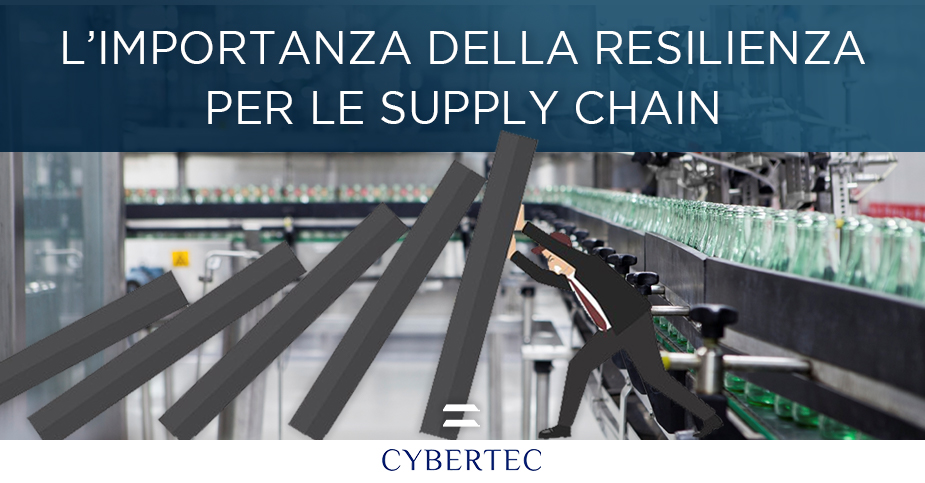The Covid-19 pandemic and the related interruptions to production caused by the virus pandemic have revealed how fragile some supply chains can be. This problem has affected companies around the world differently, but some analysis can be done on US companies.
According to a survey by the Institute for Supply Management (ISM), in fact, almost 75% of US companies suffered a supply chain disruption as a result of the Covid-19 epidemic (source).
Martijn Rasser, a fellow at the Center for a New American Security, then said, “With all the uncertainty surrounding the outbreak of the coronavirus outbreak, one thing is certain: the methods needed to prevent or contain an outbreak have highlighted the vulnerability and fragility of U.S. supply chains”(source).
The risks of fragile supply chains
A major danger highlighted by the crisis linked to the Covid-19 epidemic refers to the fact that even today most manufacturing companies are not able to predict how serious the consequences of some variations and critical situations will be, because companies do not always know where the key raw materials for their production come from. The coronavirus outbreak and its consequences have therefore shown how delicate today’s supply chains are, which are based on outsourcing and small margins. Many economic sectors are witnessing the fragility of the supply chain and the fact that it is important to have visibility into the supply chain. In many cases, in fact, what made the difference in reacting to the unforeseen events related to the recent epidemic was the visibility on what was about to happen.
Making supply chains more resilient
Mit professor David Simchi-Levi said that offshoring and just-in-time delivery have made supply chains more fragile and that as a result “companies will be under pressure to diversify the origin of their products, which will be easier for some companies than others.” Risk management experts have repeatedly suggested that all companies should map their value chains, identify the most vulnerable points of the chains themselves and make them more resilient.
Years ago, María Jesús Sáenz, a professor at the MIT-Zaragoza International Logistics Program, and Elena Revilla, a professor of operations at IE Business School, wrote, “In many companies, supply chain resilience has not kept pace with the continuous increase in logistics complexity.” and suggested five things companies could do to increase their resilience:
- Identify strategic priorities. Companies must determine if there are priorities between products in terms of costs or response times.
- Map the weaknesses of your supply chain. Today’s supply chains are vulnerable for a number of reasons, including political changes, regulatory changes, growing economic uncertainty, rapid changes in technology, increased customer expectations, capacity constraints, globalized market forces, and natural disasters. It is therefore important to understand where a company’s vulnerabilities lie. ”
- Integrate risk awareness into the product and value chain. The two experts suggest that companies integrate risk awareness into supply chain design and approach it proactively. To do this, resilient products can be designed (for example, products that can use alternative components); and strengthen the resilience of the supply chain (with “equipment, processes, production sites and external services whose primary purpose is to reduce the time and magnitude of a possible post-disaster recovery”).
- Monitor resilience. Sáenz and Revilla explain: “To achieve effective transparency and resilience, objective and comparable metrics are required.”
- Check future events. As with the Covid-19 pandemic, Sáenz and Revilla state that: “Not all events can be anticipated.” However, they suggest companies take proactive steps to integrate alerts and that companies should “assess the nature, extent and impact of a criticality and calibrate their responses accordingly.” George S. Day, Professor Emeritus of Geoffrey T. Boisi at the Wharton School of the University of Pennsylvania adds, “The costs of being slow to perceive threats and opportunities on the competitive horizon can be devastating. Companies can avoid these dangers by identifying changes in advance of their competitors”.
The risks and opportunities of the current situation
Concurrently with Sáenz and Revilla another group of academics wrote: “To thrive despite disruptive events, companies need to improve how they deal with unforeseen disruptions in supply chains. Companies can cultivate that resilience by understanding their vulnerabilities and developing specific capabilities to compensate for them.” (source). Making supply chains less fragile may require different strategies: “The reality is that practices designed to keep costs down can increase risk levels during supply chain emergencies and disruptions. Lean and just-in-time production methods, where managers work closely with a small number of suppliers to keep inventories low, can make companies more vulnerable due to a lack of buffer capacity. ”
Managers who also take resilience into account, on the other hand, have already shown how it is possible to improve traditional risk management practices thanks to tools that help them anticipate, prepare, adapt and regain ground when disruptions occur. In some cases, they are even able to treat disasters as opportunities that allow them to gain a competitive advantage. The Covid-19 pandemic therefore helps to understand once again the importance of making their supply chains more resilient and resilient.
Make your supply chain more resilient and resilient.
Make the best decision every day based on easy-to-create, easy-to-read scenarios built from secure data and processes. Anticipate competition by reacting to market changes in the best possible way.
Equip your company with a powerful tool that can be used remotely, giving visibility into what is happening to the production chain, from suppliers to delivery to the customer.
Contact our experts for more information.

